Social gatherings in English
Activities (Lesson Plans)
ACADEMIC RESOURCES ON HUMOR IN ENGLISH
Resources in this section curated by: Carla Consolini, Tigre Lusardi, Lorelei Pfeffer, Johanna Lyon, Cathy Lee, Tung Tuaynak, Jermayne Tuckta, and Ken Ezaki Ronquillo
Attardo, Salvatore. (2003). Introduction: the pragmatics of humor. Journal of Pragmatics, 35, 1287-1294.
This article provides a foundation for understanding how pragmatics function within humor. It explains how jokes are set-up in terms of phonological, syntactic, and morphological construction and directs readers to other salient literature on the topic. It then goes on to discuss how laughter pragmatically works within humor. Not only is it present in people who experience something humorous or a joke, but it is also present in someone telling a joke often before they complete what they are saying. These non-verbal indicators of humor are key to pragmatically understanding how humor works.
This article is critical for a beginning understanding of the pragmatics of humor. While other articles delve into specific studies or attributes of pragmatics in humor, this article sets a clear foundation and easy entry-point for teachers who are unfamiliar with the topic and are not clear where to start. Therefore, it informs how to begin with pragmatics when it is an unfamiliar topic.
Davies, C. E. (2003). How English-learners joke with native speakers: An interactional sociolinguistic perspective on humor as collaborative discourse across cultures. Journal of pragmatics, 35(9), 1361-1385. https://doi.org/10.1016/S0378-2166(02)00181-9
In this study the author analyzed data taken from three peer conversation groups in an intensive English language program. Each group included five second language (L2) English learners and one first language (L1) English speaker. Learners were tasked with discussing their progress in learning English, specifically focusing on any humorous or misunderstood moments that occured when they first entered the program. Results showed that humorous utterances are a co-constructed speech act requiring use of learners’ sociolinguistic resources. Learners first rely on nonverbal and lexical resources when constructing humorous utterances, and interaction with L1 speakers can provide learners with support in scaffolding, prompting and helping to encourage or direct the verbal use of humor.
Hidalgo-Downing, L., Hidalgo-Downing, R., & Downing, A. (2014). Strategies of (in)directness in Spanish speakers’ production of complaints and disagreements in English and Spanish, in A. Gomez Gonzalez, F. Mendoza Ibanes, F. Gonzalvez-Garcia, and A. Downing (Eds.), The Functional Perspective on Language and Discourse: Applications and implications.
This was a study into how students from a Spanish university use their strategies on how to be indirect when expressing complaints, disapproval and disagreements, both in English and Spanish, though the use of role play to elicit these use of indirectness. Results show that different strategies were used when speaking Spanish or English, showing that students adapt their strategies depending on their understanding of the culture (English vs Spanish) they were participating in.
Laineste, L., & Voolaid, P. (2016). Laughing across borders: Intertextuality of internet memes. European Journal of Humor Research, 4(4), 26-49. https://www.ceeol.com/search/article-detail?id=972141
In this article the authors reviewed memes from websites that collect popular ones among Estonian users. The goal of this analysis was to investigate the intertextuality of viral and comedic internet content that is flexible enough to be transformed from culture to culture. What the authors highlight is how humor can help create a hybrid intertextuality between the cultural references (in this case of the Estonian-speaking community) and a global community on the internet (mainly English-speaking).
Widiana, Y. (2014). A Pragmatics Study on Jokes and the Implicature in Broadcast Messages. International Journal of Social, Behavioral, Educational, Economic, Business and Industrial Engineering, 8(9).
The research in this article investigates how implicature functions within humor on social media platforms. It looked at two popular platforms and the type of jokes that contained prior knowledge or implicature that occurred on the platform. The study found that implicature occurred in two forms: conversational and conventional. Conventional implicature makes implications based on common knowledge from a speech community while conversational implicature requires contextual knowledge and may not function in another setting.
This article pertains closely to our project in that jokes depend closely upon co-constructed knowledge within a speech community and therefore upon implicature. Many of the jokes and humor we have curated depend upon implications and shared knowledge. Without the implications, whether generated culturally, pragmatically, or linguistically, the humor would be absent and the jokes would not be able to function. Therefore, implicature is a key pragmatic component to humor.
Yus, F. (2008). A Relevance-Theoretic Classification of Jokes. Lodz Papers in Pragmatics, 4(1), 131-157.
This has a theoretical basis in relevance theory which hypothesizes that humans are evolutionarily conditioned to pay attention and process information that is potentially relevant and dismiss information that seems irrelevant. Relevance theory suggests that humor is often dependent upon assumed interpretations of content from the listener or anticipations that may or may not come to fruition. Much of humor is derived from moments where the explicit interpretations are questioned and therefore our schemas are questioned. This study goes on to provide innumerous types of jokes dependent on different pragmatic interactions.
This research is pertinent to our project in how it details the different pragmatic forms across types of jokes. While there are similarities across a broad array of humor in English, the specificity offered by this article provides a greater degree of analysis for our curated content. This article will allow us to look in depth at each joke and categorize it to different pragmatic techniques around humor, thus making our analysis deeper and more meaningful.
